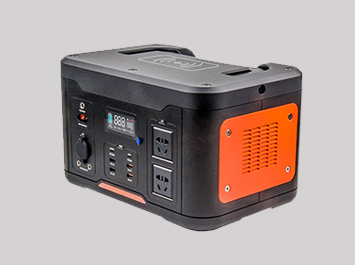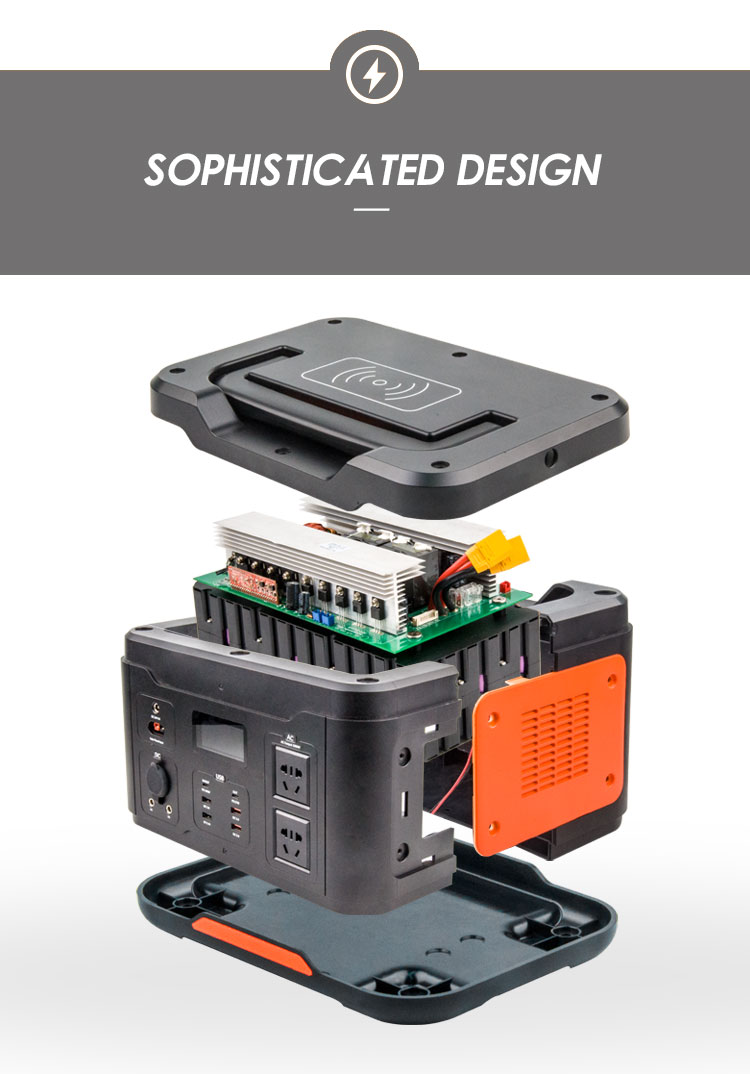Views: 0 Author: Site Editor Publish Time: 2025-07-17 Origin: Site










Imagine being in the middle of a camping trip when your phone battery dies, or a storm knocks out the power at home. What do you do?
Portable power stations have become a go-to solution in these situations, providing reliable power during emergencies and outdoor activities. Are portable power stations worth it? In this post, we’ll explore their benefits, common uses, and whether they’re a good investment for you.
A portable power station is a compact, rechargeable device that stores electrical energy. It’s like a large battery but designed to power various devices and appliances. These power stations are commonly used for outdoor activities, emergencies, and as backup power sources.
The main components include lithium-ion batteries, which store the energy, and AC/DC outlets, allowing you to connect your devices. They come in various sizes, from small, lightweight models to larger ones that can power more devices for longer periods. Common capacities range from 200Wh to over 3000Wh, depending on how much power you need.

Portable power stations store electricity in built-in batteries. They take power from different sources, such as wall outlets, solar panels, or even car chargers. Once charged, they can deliver electricity through AC or DC outlets.
They can power a variety of devices. Smaller models may charge phones or laptops, while larger ones can run fridges, lights, and even small appliances. You just plug in your device, and the power station delivers electricity, making it easy to stay powered up wherever you are.
Are portable power stations worth it for emergencies? Absolutely. During power outages or natural disasters, a portable power station can be a lifesaver. They provide power for essential devices like fridges, phones, and even CPAP machines, ensuring you stay connected and comfortable.
For instance, in a storm, when power lines go down, these power stations can keep your phone charged for emergency alerts. They also allow you to keep food cold in the fridge or even run your medical equipment, ensuring safety until the power is restored.
Are portable power stations worth it for camping or off-grid adventures? Yes, they’re perfect for outdoor activities. Whether you’re camping, staying in an RV, or at a remote cabin, a portable power station powers your lights, fans, heaters, and even small projectors. You can also charge devices like phones, laptops, and cameras, ensuring you stay connected during your adventures.
When you’re off the grid, these power stations make it easy to enjoy modern comforts without needing to rely on traditional power sources.
Are portable power stations worth it for sustainability? Definitely. Many portable power stations support solar charging, allowing you to use renewable energy. This reduces your reliance on gasoline-powered generators, which pollute the air and are noisy.
By switching to solar-powered portable power stations, you’re making a positive impact on the environment, all while enjoying reliable, eco-friendly power.
Are portable power stations worth it for everyday use? Absolutely. They’re incredibly easy to use. Simply plug them in, and you're good to go. These power stations often feature multiple ports, so you can charge several devices simultaneously, such as phones, laptops, or cameras.
They're also much lighter and quieter than traditional generators, making them more practical for everyday use. Whether you need backup power at home or need something for a weekend trip, these portable power stations provide the versatility you need.
During a blackout, portable power stations can keep essential devices running. They can power laptops, phones, lights, and even Wi-Fi routers, so you stay connected when the grid goes down.
They’re also great for medical devices. If you rely on equipment like a CPAP or oxygen machine, a portable power station ensures they continue to work, providing you peace of mind during power outages.
Are portable power stations worth it for outdoor adventures? Yes! These devices are perfect for camping and other outdoor activities. You can power lights, coolers, heaters, and even drones for photography or entertainment. They can also support larger gear like projectors or speakers for a fun camping experience.
Whether you're glamping or attending an outdoor event, a portable power station ensures you have reliable power without being tied to a fixed location.
Portable power stations are incredibly useful for DIY projects and garden work. You can easily power your tools, like drills, saws, or even electric garden equipment, without needing an outlet.
No more dealing with long extension cords or searching for a nearby power source. Simply plug your tools into the portable power station, and you’re ready to tackle your project anywhere.
Are portable power stations worth the investment? The short answer depends on your needs. Portable power stations come in a variety of price ranges, from budget-friendly models to premium versions. The price of a power station usually correlates to its capacity, features, and brand reputation.
Affordable models typically range from $100 to $500. These are ideal for lighter tasks, like charging a phone or running a few small devices. On the other hand, premium models can cost anywhere from $1,000 to $3,000, offering higher power capacities and more features. Premium options might have more ports, higher wattage, and the ability to run larger appliances.
When considering whether it’s worth the investment, it’s important to think about how often you'll use it and what devices you’ll power. For regular camping trips, a smaller, more affordable unit might suffice. But for emergencies or off-grid living, investing in a higher-capacity model might be a smarter choice.
Is it better to buy a portable power station or a traditional generator? This is a common dilemma for many. Traditional gas-powered generators can provide more power for extended periods, making them suitable for heavy-duty appliances. However, they are noisy, produce harmful emissions, and require fuel, making them less eco-friendly and harder to transport.

Silent operation: Unlike noisy gas generators, portable power stations are virtually silent.
Eco-friendly: No emissions, making them safer for indoor use.
Portability: Lightweight and easy to carry, perfect for camping or emergency situations.
Ease of use: Simply plug in your devices and start using them, without worrying about fuel.
Limited capacity: They can’t handle large appliances like air conditioners or dryers for extended periods.
Recharge time: Charging can take several hours, especially when using solar panels.
Cost: They can be expensive, especially for high-capacity models.
More power: Can supply higher wattages, useful for large appliances.
Longer runtime: Can operate for days without needing a recharge.
Noise: They are loud, disrupting your peace and quiet, especially in outdoor settings.
Environmental impact: Emit harmful gases like carbon monoxide.
Size and weight: Not as portable as a power station, and they require more space.
Ultimately, if you need consistent, high-powered energy and don’t mind the noise or environmental impact, a traditional generator might be the right choice. However, for smaller tasks, outdoor adventures, or emergency situations, a portable power station may be the better, more practical option.
Are portable power stations worth it for your specific needs? To determine if one is right for you, there are several factors to consider. These include estimating the wattage you need, battery capacity, recharge time, and more.

Before purchasing a portable power station, it’s important to estimate the wattage required to power your devices. You’ll need to know how much power your devices consume in watts per hour. Here’s a simple guide to help you figure it out:
| Device | Estimated Wattage per Hour |
|---|---|
| Smartphone | 10-20W |
| Laptop | 40-100W |
| Small Refrigerator | 100-250W |
| CPAP Machine | 30-60W |
| LED Lights (set of 4) | 20-40W |
| TV | 80-200W |
Once you know the wattage, you can select a power station that can handle the total wattage for all the devices you want to power at once.
Battery capacity, measured in watt-hours (Wh), determines how long the portable power station can run before needing a recharge. A higher Wh means a longer running time. For example:
A 200Wh power station can run a phone (20W) for 10 hours, or a small refrigerator (100W) for 2 hours.
A 1000Wh model could power your phone for 50 hours or run a fridge for 10 hours.
When choosing a model, balance the capacity with your typical usage. If you plan to power multiple devices for extended periods, a higher-capacity power station is necessary.
Recharge time is another crucial factor. Portable power stations can be recharged in several ways:
Wall outlet: This is the fastest and typically takes 4-8 hours.
Solar panels: This is eco-friendly but can take 10-12 hours or more, depending on the sunlight.
Car charger: Ideal for travel, but slow, usually taking 10-15 hours to recharge fully.
If you need the power station quickly, a wall outlet recharge will be the best option. However, if you're off the grid and have access to solar panels, they’re a sustainable option that allows you to keep your station charged without relying on traditional power sources.
Portable power stations come with different ports and outputs. Consider what devices you'll be charging. Some stations offer:
USB-A and USB-C: For phones, laptops, and smaller devices.
AC outlets: For larger devices like fridges, TVs, or small appliances.
DC outputs: Often used for powering specific tools or devices in RVs.
Some models even have wireless charging pads or LED lights, which can come in handy during camping trips or power outages.
Portable power stations offer reliable backup power, eco-friendly energy, and convenience during emergencies, outdoor adventures, and off-grid living. They are great for keeping essential devices powered during outages, camping, or travel.
If you need reliable, silent, and eco-friendly power for small devices, they are worth it. Before purchasing, consider your power needs, budget, and devices. Contact the supplier for more details and the best options available.
A: Yes, they provide reliable, eco-friendly, and silent power for small devices. Ideal for emergencies, outdoor activities, and off-grid living.
A: It can replace a traditional generator for small devices and short-term use but lacks the capacity for heavy-duty appliances.
A: Portable power stations typically last 5-10 years, depending on usage and maintenance.
A: Yes, many portable power stations support solar panel charging, making them an eco-friendly power source.